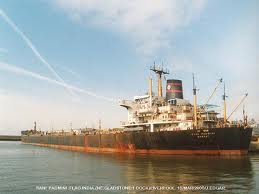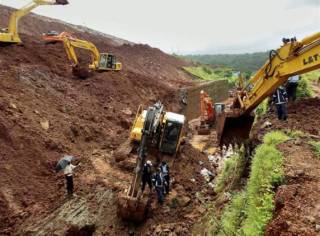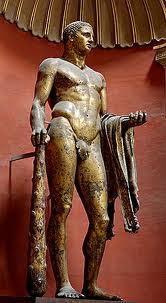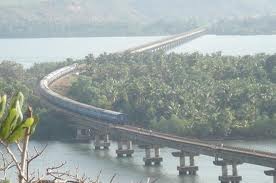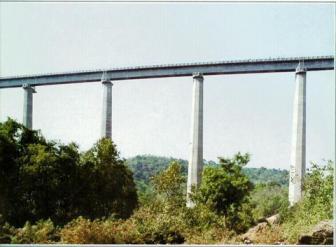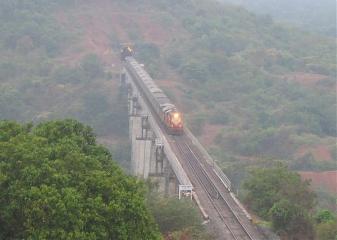Saturday, March 31, 2012
Thursday, March 29, 2012
Wednesday, March 28, 2012
Diet, Culture, Stress and lack of Fitness.
Mohan Singh had his arteries by passed recently a procedure that increasing numbers of Indians are having. Last year, medical journal Lancet reported a study of 20,000 Indian patients and found that 60 per cent of the world's heart disease patients are in India, which has 15 per cent of the world's population.
This number is surprising because reports of obesity and heart disease focus on fat Americans and their food. What could account for Indians being so susceptible -- more even than burger-and-fries- eating Americans?
Four things: diet, culture, stress and lack of fitness.
There is no doctrinal prescription for vegetarianism in Hindu diet, and some texts explicitly sanction the eating of meat. But vegetarianism has become dogma.
Indian food is assumed to be strongly vegetarian, but it is actually lacking in vegetables. Our diet is centred around wheat, in the north, and rice, in the south. The second most important element is daal in its various forms. By weight, vegetables are not consumed much. You could have an entire South Indian vegetarian meal without encountering a vegetable. The most important vegetable is the starchy aloo. Greens are not cooked flash-fried in the healthy manner of the Chinese, but boiled or fried till much of the nutrient value is killed.
Gujaratis and Punjabis are the two Indian communities most susceptible to heart disease. Their vulnerability is recent. Both have a large peasant population -- Patels and Jats -- who in the last few decades have moved from an agrarian life to an urban one. They have retained their diet and if anything made it richer, but their bodies do not work as much. This transition from a physical life to a sedentary one has made them vulnerable.
Gujaratis lead the toll for diabetes as well, and the dietary aspect of this is really the fallout of the state's economic success. Unlike most Indian states, Gujarat has a rich and developed urban culture because of the mercantile nature of its society. Gujaratis have been living in cities for centuries.
Th prosperity has given the Gujarati surplus money and, importantly, surplus time. These in turn have led to snacky foods, some deep fried, some steamed and some, uniquely in India, baked with yeast. Most Indians are familiar with the Gujarati family on holiday, pulling out vast quantities of snacks the moment the train pushes off.
Gujarati peasant food -- bajra (millet) roti, a lightly cooked green, garlic and red chilli chutney, and buttermilk -- is actually supremely healthy. But the peasant Patel has succumbed to the food of the 'higher' trader and now prefers the oily and the sweet.
Marathi peasant food is similar, but not as wholesome with a thick and pasty porridge called zunka replacing the green.
Bombay's junk food was invented in the 19th century to service Gujarati traders leaving Fort's business district late in the evening after a long day. Pao bhaji, mashed leftover vegetables in a tomato gravy served with shallow-fried buns of bread, was one such invention.
The most popular snack in Bombay is vada pao, which has a batter-fried potato ball stuck in a bun. The bun -- yeast bread -- is not native to India and gets its name pao from the Portuguese who brought it in the 16th century. Bal Thackeray encouraged Bombay's unemployed Marathi boys to set up vada pao stalls in the 60s, which they did and still do.
The travelling chef and TV star Anthony Bourdain called vada pao the best Indian thing he had ever eaten, but it is heart attack food.
Though Jains are a very small part (one per cent or thereabouts) of the Gujarati population, such is their cultural dominance through trade that many South Bombay restaurants have a 'Jain' option on the menu. This is food without garlic and ginger. Since they are both tubers (as also are potatoes), Jains do not eat them, because in uprooting them from the soil, living organisms may be killed (no religious restriction on butter and cheese, however!). The vast majority of Ahmedabad's restaurants are vegetarian. Gujaratis have no tolerance for meat-eaters and one way of keeping Muslims out of their neighbourhoods is to do it through banning 'non-vegetarians' from purchasing property in apartment buildings.
Even in Bombay, this intolerance prevails. Domino's, the famous pizza chain, has a vegetarian-only pizza outlet on Malabar Hill (Jinnah's neighbourhood) . Foreigners like Indian food, and it is very popular in England, but they find our sweets too sweet. This taste for excess sugar extends also to beverage: Maulana Azad called Indian tea 'liquid halwa'. Only in the last decade have cafes begun offering sugar on the side, as diabetes has spread.
India's culture encourages swift consumption. There is no conversation at meal-time, as there is in Europe. Because there are no courses, the eating is relentless. You can be seated, served and be finished eating at a Gujarati or Marathi or South Indian thali restaurant in 15 minutes. It is eating in the manner of animals: for pure nourishment. We eat with fingers, as opposed to knives and forks, or chopsticks, resulting in the scooping up of bigger mouthfuls. Because the nature of the food does not allow for leisurely eating, Indians do not have a drink with their meals. We drink before and then stagger to the table.
As is the case in societies of scarcity, rich food is considered good -- and ghee is a sacred word in all Indian languages. There is no escape from fat. In India, advertising for healthy eating also shows food deep fried, but in lower-cholesterol oil.
The insistence by family – 'thoda aur le lo' -- at the table is part of our culture of hospitality, as is the offering of tea and perhaps also a snack to visiting guests and strangers. Middle class Indians, even families that earn Rs10,000 a month, will have servants. Work that the European and American does, the Indian does not want to do: cooking, cleaning, washing up.
Painting the house, changing tyres, tinkering in the garage, moving things around, getting a cup of tea at the office, these are things the Indian gets someone else to do for him. There is no sense of private space and the constant presence of the servant is accepted.
Gandhi's value to India was not on his political side, but through his religious and cultural reforms. What Gandhi attempted to drill into Indians through living a life of action was a change in our culture of lethargy and dependence. Gandhi stressed physical self-sufficiency, and even cleaned his toilet out himself.
But he wasn't successful in making us change, and most Indians will not associate Gandhi with physical self-sufficiency though that was his principal message. Indian men do no work around the house. Middle class women do little, especially after childbirth. Many cook, but the cutting and cleaning is done by the servant. Slim in their teens, they turn thick-waisted in their 20s, within a few years of marriage.
Since we are dependent on other people, we have less control over events. The Indian is under stress and is anxious. This is bad for his health. He must be on constant guard against the world, which takes advantage of him: the servant's perfidy, encroachment by his neighbours, cars cutting in front of him in traffic, the vendor's rate that must be haggled down. Almost nothing is orderly and everything must be worried about.
In the Indian office, the payroll is a secret, and nobody is told what the other makes. Knowledge causes great stress, though the lack of information is also stressful, leading to spy games and office gossip. Because there is no individualism in India, merit comes from seniority and the talented but young executive is stressed by the knowledge that he's not holding the position he deserves. Indians are peerless detectors of social standing and the vertical hierarchy of the Indian office is sacrosanct.
Dennis Kux pointed out that Indian diplomats do not engage officially with an American of lower rank, even if the American was authorised to decide the matter. In the last decade, when Indians began owning companies abroad, the Wall Street Journal reported on cultural problems that arose. Their foreign employees learnt quickly that saying 'no' would cause their Indian bosses great offence, so they learnt to communicate with them as with children.
Indians shine in the west where their culture doesn't hold them back. In India honor is high and the individual is alert to slights from those below him, which discomfort him greatly. There is no culture of physical fitness, and because of this Indians don't have an active old age.
Past 60, they crumble. Within society they must step back and play their scripted role. Widows at that age, even younger, have no hope of remarriage because sacrifice is expected of them. Widowers at 60 must also reconcile to singlehood, and the family would be aghast if they showed interest in the opposite sex at that age, even though this would be normal in another culture.
--
Please delete my e-mail address from this message, if you plan to forward it.
Monday, March 26, 2012
Corporate fraud : Mind your language
Corporate fraud
Mind your language
How linguistic software helps companies catch crooks
Feb 18th 2012 | NEW YORK AND PARIS | from the print edition of the Economist

IN THE film "Superman 3", a lowly computer programmer (played by Richard Pryor, pictured) embezzles a fat wad of money from his employer. The boss laments that it will be hard to catch the thief, because "he won't do a thing to call attention to himself. Unless, of course, he is a complete and utter moron." Just then the thief screeches into the car park in a brand new red sports car, radio blaring.
In the real world, embezzlers are seldom so obvious. The traditional way to snare them is to hire an accountant to scrutinise accounts for anomalies. But this is like looking for a contact lens in a snowdrift. So firms are turning to linguistic software to narrow the search.
Rip-offs tend to occur in what gumshoes call the "fraud triangle": where incentive, rationalisation and opportunity meet. To spot staff with the incentive to steal (over and above the obvious fact that money is quite useful), anti-fraud software scans e-mails for evidence of money troubles. Phrases like "under the gun" and "make sales quota" can indicate that an employee is desperate for a bit extra.
Spotting rationalisation is harder. One technique is to identify those who seem unhappy about their jobs, since some may rationalise wrongdoing by telling themselves that their employer is an evil corporation that deserves to be ripped off.
Ernst & Young (E&Y), a consultancy, offers software that purports to show an employee's emotional state over time: spikes in trend-lines reading "confused", "secretive" or "angry" help investigators know whose e-mail to check, and when. Other software can help firms find potential malefactors moronic enough to gripe online, says Jean-François Legault of Deloitte, another consultancy.
To work well, linguistic software must adjust to the way different people talk. For example, when software gurus at E&Y looked at e-mails among financial traders, their first impression was that "these guys' hair is on fire," recalls Vincent Walden, a fraudbuster at the firm. The e-mails were packed solid with swear-words. But this is how traders normally talk. It is when they go quiet that the software must prick up its electronic ears.
Dick Oehrle, the chief linguist on the project, explains how it works. First, the algorithm digests a big bundle of e-mails to get used to employees' language. Then human lawyers code the same e-mails, sorting things as irrelevant, relevant or serious. The human feedback and the computers' results are then reconciled, so the system gets smarter. Mr Oehrle says the lawyers also learn from the computers (presumably such things as empathy and the difference between right and wrong).
To find employees with the opportunity to steal, the software looks for what snoops call "out of band" events: messages such as "call my mobile" or "come by my office" suggest a desire to talk without being overheard. E-mails between an employee and an outsider that contain the words "beer", "Facebook" or "evening" can suggest a personal relationship.
Your e-mails may be aired in court
Financial Tracking Technologies, a firm based in Connecticut, goes a step further, making software that can go through calendar apps and travel-expense claims to determine who has come into contact with certain outside investors. This can be married with information about the timing of trades: for example, a short sale before the public release of bad news, says Tony Turner, the company's boss.
Or consider a broker who e-mails someone a question about the trading volume at which a certain stock would be likely to rise (or fall). This might indicate an interest in manipulating the price. So the software will sift through other data to see if the broker would benefit, even indirectly, perhaps by increasing the value of a derivative in his personal portfolio, says Frédéric Boulier, a Paris-based director of NICE Actimize, an American firm.
Employers without such technology are "operating blind", says Alton Sizemore, a former fraud detective at America's FBI. They often pursue costly investigations based on hunches, which are usually wrong, he says. Mr Sizemore, who now works for Forensic/Strategic Solutions, an anti-fraud consultancy in Alabama, reckons that nearly all giant financial firms now run anti-fraud linguistic software, but fewer than half of medium-sized or small financial firms do.
So there is plenty of room for growth. NICE Actimize says its revenues are steadily rising, though it declines to give figures. Prospective users typically pay for a single "snapshot" search of 12 months of company records, according to APEX Analytix, a developer of the software in Greensboro, North Carolina. For a company with 10,000 employees, this costs about $45,000. Unless a company is very small, evidence of fraud almost always surfaces, convincing clients to sign up for a yearly package that costs three or four times as much as a spot-check, says John Brocar of APEX Analytix.
Why spend the money? Partly because no one likes to be ripped off. But also because laws on bribery (which is harder to spot than theft) have grown tougher. American bosses can in theory be jailed if their underlings grease palms. Jonas Dischl-Luell of AWK Group, a Swiss firm, sells software that scans e-mail addresses to see if any employees are in contact, even indirectly, with officials in corrupt governments. If a company shows it has systems in place to detect this kind of thing, and starts investigating before outsiders do, it may have an easier time in court.
From alpha to smart beta ( from the Economist)
The industry's language is changing
Feb 18th 2012 | from the print edition
Dear investor,
In line with the rest of our industry we are making some changes to the language we use in our marketing and communications. We are writing this letter so we can explain these changes properly. Most importantly, Zilch Capital used to refer to itself as a "hedge fund" but 2008 made it embarrassingly clear we didn't know how to hedge. At all. So like many others, we have embraced the title of "alternative asset manager". It's clunky but ambiguous enough to shield us from criticism next time around.
We know we used to promise "absolute returns" (ie, that you would make money regardless of market conditions) but this pledge has proved impossible to honour. Instead we're going to give you "risk-adjusted" returns or, failing that, "relative" returns. In years like 2011, when we delivered much less than the S&P 500, you may find that we don't talk about returns at all.
It is also time to move on from the concept of delivering "alpha", the skill you've paid us such fat fees for. Upon reflection, we have decided that we're actually much better at giving you "smart beta". This term is already being touted at industry conferences and we hope shortly to be able to explain what it means. Like our peers we have also started talking a lot about how we are "multi-strategy" and "capital-structure agnostic", and boasting about the benefits of our "unconstrained" investment approach. This is better than saying we don't really understand what's going on.
Some parts of the lexicon will not see style drift. We are still trying to keep alive "two and twenty", the industry's shorthand for 2% management fees and 20% performance fees. It is, we're sure you'll agree, important to keep up some traditions. Thank you for your continued partnership.
Zilch Capital LLC
Sunday, March 25, 2012
Matter of Perspective
Absolutely FANTASTIC and is amazing……………….
From the tiniest thing we know to the largest .......………..
<http://htwins.net/scale2/>
move cursor on scroll bar
RSK
The World in the Year You Were Born.....
|
Says Press Council Chairman Justice Markandey Katju ........
"Ninety per cent of media coverage goes to entertainment. The problems of the country are not price rise, employment, poverty but whether Sachin Tendulkar has scored his 100th century. Once he has scored his 100th century, issues like unemployment, hunger and poverty are finished and rivers of milk and honey will flow here."
"When Rahul Dravid retires, it is the greatest catastrophy in history. Rahul Dravid retired, the country is doomed. For days on end, the media hyped it up. This is your Indian media," he added.
18 years = 2 coins
Friday, March 23, 2012
The Bharat Ratna no one talks about : Dr Elattuvalapil Sreedharan….
Dec 31st 2011
India had just lost the boxing day test match, with a day to spare. Star News was deciding who was the 'Match Ka Mujrim'. Others were wondering when Sachin will finally score that created in the boardroom, 100th hundred. If an alien visited India around that time and switched on the tele, he/she would have thought our world started and ended with cricket.
Pretty sad, considering an event that slipped completely under our radar.
Dr Elattuvalapil Sreedharan, affectionately called the 'MetroMan of India', bid adieu to his 56 year long career of creating 21st century monuments. His exit was a reflection of how he lived; simple, elegant and completely inconspicuous.
Just pause for a moment and think.
56 successive years, in a single job, without a break.
56 Years.
In other words, Dr Sreedharan, worked continuously for a duration, in which an average Indian generally goes from the cradle to his/her grave.
And no one in the media was paying a tribute to this great man. They were not even talking about it. All they had was a silly ticker at the bottom of the screen, that said 'Dr Sreedharan Retires'. No ten thousand word articles, no special Dr Sreedharan shows, nothing. It was like, it didn't even happen.
Fundamental question is, Why?
Is it simply because, Dr Sreedharan, is not your quintessential Indian Success Story?
I mean, he is not a IITian, nor is he from an IIM. He is not from a minority community. He did not surmount racial and casteist prejudices imposed by the society. He did not fetch water at 4 in the morning and did not study under street lamps. He did not milk cows to pay for his education. He is neither an actor nor a singer. Neither is he a cricketer nor a cricketer who claims to be an actor.
He was just a simple middle class Indian, who went about his job.
In other words, he does not fall under any bracket that our media terms as 'an Indian Success Story'.
And according to the media, not an 'Indian Success Story' meant 'No tribute'. And this in a day, when even a guy like Chetan Bhagat will get a glowing biography on his life and times, the day he finally decides to stop writing.
OK, sod the the media. They have TRPs and paying news customers to take care of. But what about the government? They don't have to answer to anybody. And this guy dedicated his entire life to them. At least they can do something.
But No.
When names were being bandied about for the Bharat Ratna, India's highest civilian honor, everyone, from politicians to Dhanush, had only one name, 'I am stuck on 99′ Tendulkar. Infact lobbying for that guy reached such epic proportions, that the government actually changed the award criteria to accommodate that actor.
And Mr Sreedharan, who triple checks all the existing criteria, was not even being mentioned.
The travesty is all the more acute if you consider what Dr Sreedharan has done for our nation.
Like
Date: 22nd of December in 1964,
Location: Rameshwaram town
For most of the non south-Indians, Madras and South India are interchangeable terms. But what you do not know is, South India also happens a favorite holiday spot for various cyclones brewing in the Bay of Bengal. And this South India is not Madras alone, but the entire states of Andhra Pradesh and Tamil Nadu.
This geographical part of India has been hit by so many cyclones that nowadays meteorologists have run out of names.
One such cyclone, hit the coastal town of Rameshwaram on 22nd of December, 1964. And it was a deadly one.
Not so long ago, south of Rameshwaram, there used be a bustling town called Dhanushkodi. It had its own post office, customs office and even a Railway Station. My bet is most of you wouldn't have heard about it. Why?
Because on that fateful night, the Indian Ocean swallowed the entire town. More than 2000 Indians were killed. The ocean even ensured that, a passenger train which was beginning its last journey of the day at 11.15 P.M, made its last journey ever. If you still can't imagine the ferocity of this cyclone, let me help you
So where does Dr Sreedharan come in all of this?
As a sideshow, the cyclone destroyed the Pamban Bridge, the only bridge connecting Rameshwaram to mainland India. And this meant Rameshwaram was completely isolated. Considering the above cyclone something had to be done, and fast.
At that time, Dr Sreedharan was a Deputy Engineer in the Southern Railway. And this piece of wreck was in his territory. Indian Railways, gave Dr Sreedharan six months to restore connectivity to Rameshwaram. Which was asking a lot considering
Dr. Sreedharan, had to convert this
To
IN SIX MONTHS
Dr Sreedharan finished the job in ..FORTY SIX 1964 DAYS.
He took one month and 15 days to restore, THAT bridge, back to full operation. The bridge which was India's longest sea bridge for 96 years, till the Bandra Worli Sea Link was inaugurated in the year 2008.
Forty six days to restore this 2.3 Km bridge in a state where
took six effin months to restore after being washed away by a flash flood, in 2006.
There are some achievements that look cool, but once you get an award, you completely forget about them. And then there are some you won't forget, even if you suffer a total memory loss.
This was one of those things.
For all this trouble, Dr Sreedharan got a Railway award consisting of Rs 100 and an awful looking plaque.
The process of short-changing Dr E Sreedharan, began in 1964.
Even If Dr Sreedharan, sat and twiddled his thumbs for the rest of his life, he would have been considered a superhero for his bridge-building awesomeness alone. Fortunately for India though, he did not like twiddling thumbs.
Packing his bags for his next assignment, he set off to Calcutta, where he became the chief designer of the Calcutta Metro. And then, getting bored of railways in general, he took charge of India's largest Ship building company, Cochin Shipyard.
There he designed, built and commissioned India's first indigenously built Merchant vessel, the Rani Padmini, in 1981.
After building everything from trains to ships, Dr Sreedharan according to government rules, had to retire in 1990 when he completed 60 years of age.
But, when you are Dr Sreedharan, you don't have the plebian privilege of retirement.
He was asked to go to Mumbai, to take charge of what was then deemed to be India's toughest project since independence. It involved burrowing through basalt mountains, spanning kilometer long marshes and rivers and taking railways to a place where even the Britishers thought it was impossible.
This region was the Western Ghats of Maharashtra, affectionately called, the Konkan.
The railway babus simply called this herculean venture, Konkan Railway. Naming things is not really their forte.
This is what Dr E Sreedharan had to do,
Lay 760 Kms of railway track, through a terrain
that had
and this
infested with
and perennially at the risk of
And to do that, Sreedharan had to
1. Acquire 5000 hectares of land from 42,000 assorted land owners.
2. Build 2000 Bridges, both major and minor, across Marshes, swamps, rivers and backwaters.
3. Blast 92 tunnels, totaling 83 kilometers in length through Basalt, nature's adamantium and soft soil, nature's china clay. You need nuclear weapons and Arnold to bore through the former while the latter generally collapsed on itself, if someone as much as farted.
And then came the most difficult task in the Indian Index Of Difficult tasks
4. Dealing And Negotiating With The Chief Ministers, Home Ministers, Other Ministers And Their Chelas Of Four Different States.
And to complete all of the above tasks, Dr Sreedharan, was given 8 years.
It would be like Hercules being asked to accomplish his twelve tasks, blinded and with one hand tied to his back, in three days.
Needless to say, he would have failed.
Dr Sreedharan, supposedly retired and who qualified for Indian Railway's senior citizen quota, finished the job in 7 years.
Konkan Railway to me, is the second biggest achievement of Independent India, with the first being India remaining India. New standards will have to be invented, to realistically measure the impact of Konkan Railway on the Indian economy.
For starters
1. For the first time ever, three largest ports on the Indian coast, Mumbai, Karwar and Mangalore have a direct connection.
2. Travel time from the southern states to the north, have been reduced by upto 40 percent. The crummy old Nethravathi Express, used to take 38 hours to travel from Trivandrum to Mumbai.
Now, thanks to Dr E Sreedharan and the
the same train takes 22 Hours. A 16 hour reduction in travel time. And a 16-18 hour reduction in travel times of all trains going from Kerala,Karnataka, Goa to the North.
All the trains.
Try measuring the impact. Don't bother, you can't.
And new levels of difficulty need to be established to measure the difficulty of this task. The sheer number of architectural impossibilities overcome by Dr E Sreedharan and his team in making this wild dream a reality, is mind boggling. All I can do is suggest you to go here, here and here.
However, there is one thing that encapsulates what all the above links have to say
THIS IS THE VIADUCT OVER THE PANVEL NADI
Which basically is a Marsh
Between two Hills
And to traverse it,
The train has to travel at a height, which is as tall as
In other words,
Dr Sreedharan and his team, built a goddamn Qutub Minar, over a marsh, between two hills, just so that, a train could chug over it.
Need I say more?
You will see this wonder of Modern India immediately after Ratnagiri on the Konkan Railway. In the 15 kilometer stretch between Ratnagiri and Nivasar, there are 3 tunnels and 5 viaducts. The third viaduct is the Panval Nadi viaduct, immediately after the first tunnel. The exact sequence will be —-> Big Tunnel, Massive Gorge, Big tunnel again.
Dr Sreedharan though, never had the chance to taste his success. In December 1997, one year before the Konkan Railway was thrown open to traffic, he was shunted to New Delhi to head a new organization. It was created to find a viable solution to the traffic woes of the aam aadmi in the national capital.
This organization was called the Delhi Metro Railway Corporation.
Of all the railway systems in the world, building a metro is the most difficult in the world. Most difficult, becomes impossible, when you have to build that damn thing under and over a megapolis.
Impossible reaches 'You must be kidding me' levels, when that megapolis in question is Delhi and the country in question is India.
Delhi Metro was not India's first metro. Calcutta has that honor. But Calcutta's 'I built my own metro' story, was one sorry tale
Sample this
1. It took 22 years to build the Calcutta Metro, A metro whose total length was 16.75 kms. In other words, Calcutta Metro construction dudes managed a grand average of, .76 kms a year.
2. The Calcutta metro suffered from debilitating shortages in almost everything. Shortages of funds, shortages in labour and shortages in everything else. The only they had in plenty was those damn shortages.
3. And it was harried by the parent, the Indian Railways, every step of the way.
If the Calcutta metro was any indicator, the 168 Kms long Delhi Metro would have been beset with shortages, harassed by the Railways and would have been completed in A.D 2083.
If ever there was a movie made about Dr Sreedharan's job, it would have looked something like this
But this was Dr E Sreedharan.
When he started off, he put in place some things that were never before done in the history of Indian mega construction projects
Like
1. His appointed himself as the judge, jury and the executioner as far as the Delhi Metro was concerned. No external influences were tolerated. And he took no prisoners. There have been stories were, people walked in with the traditional M.P recommendation letter, walked out of his office, with the paper in two different hands.
2. After giving himself the power, he changed the tendering process, upside down. In a country, where opening a single tender on an average, took six to nine months, Dr Sreedharan got the job done in 19 days. YES, 19 Days.
3. When confronted with the standard Government 'I am short of money' rigamarole, Dr Sreedharan did what any sensible government servant would do. He simply cut out the Government from the funding.
He single-handedly went and got a loan of USD 5 Billion sanctioned from the Japanese Bank of International Co-operation to fund the Metro. Now, 60 percent of the necessary finance secured, Government shut up and stumped up the remaining cash.
4. He then hired top International consultants from an assortment of countries, to cover for the lack of local talent, to supervise and execute the project.
For the first time in the History of India, the entire Delhi Bureaucratic circle was completely circumvented. That too, by one 74 year old dude from Kerala.
As a result
Phase one of the 5 billion dollar metro, was completed three years before schedule, entirely within the initially stipulated budget. And there was not even a single shard of corruption.
In India, that is the closest we can get to walking on water.
If someone had in 1998, said that such a thing would happen in India, He would have been given a priority ticket to Agra/Alibaug/Kilpauk or the nearest mental asylum.
Today, the Delhi Metro is complete and for the first time, Dilliwalas are enjoying the benefits of a full fledged suburban rail system that has a punctuality factor of 99.999 percent. All thanks to this man
Next time, any Dilli boy/girl tries to mock you or anyone with the moniker Madrasi, just mention the words, Metro-Sreedharan-Madrasi in the same sentence. The other side will shut up.
The successful execution of the Delhi Metro, made Dr Sreedharan the Tom Cruise of the Metro Rail universe. Every Indian city worth its salt, now wanted its own metro and Dr Sreedharan as its consultant.
One such city was Hyderabad. And the company executing that metro was a company called,MAYTAS INFRASTRUCTURE.
You know where this is going.
In September 2008, Dr Sreedharan, after observing as a consultant, sent the following report to the Planning Commission, Government of India
Making available 296 acres of prime land to the BOT [build, operate and transfer] developer for commercial exploitation was like selling the family silver. I fear a big political scandal some time later, as it is apparent the BOT operator has a hidden agenda which appears to be to extend the metro network to a large tract of his private land holdings so as to reap a windfall profit of four to five times the land price.
Planning commission, that plans little and develops less, as usual did not pay heed to this report. In fact they chastised Dr Sreedharan, for not backing up his allegation with necessary proof.
This is what happened, three months later
Remember how the scandal started? It started by Satyam Computers, arbitrarily taking over Maytas infrastructure, a company that was neither in IT, nor was a competitor. In fact the only link between Satyam and Matras was that it owned by Ramalinga Raju's sons.
And sensing that Maytas was in big trouble, he 'bought' the company to save it.
And Dr Sreedharan, predicted that the company was in trouble, three months before the world knew it.
So let me just encapsulate, if that can be done, on what Dr Sreedharan has done for the country
1. He restored India's longest sea bridge which was completely destroyed, in 46 days.
2. He designed India's first Metro.
3. Supervised the building of India's first indigenous Merchant vessel.
4. Executed India's most difficult project since Independence.
5. Gave Delhi wallahs, something called the Metro.
6. Predicted India's biggest corporate fraud, three months before it happened.
I don't know how the Bharat Ratna nomination thing works. But I believe you stand a chance if you have done something good for the country. Now tell me, what has Dr Sreedharan not done for the country?
I mean when you can consider a guy who sells a computer anti-virus on prime-time television for India's highest civilian award, Why is there not a whisper about a guy who has ensured 400,000 people on the western coast of India saw a train for the first time?
Or, was responsible for a sharp drop in road-rage killings in Delhi?
Come to think of it though, I really don't want Dr Sreedharan to get the Bharat Ratna. I mean, he will then join a club that is populated by people like Bismillah Khan, Lata Mangeshkar, Bhimsen Joshi etc. No disrespect to them, but they were at best, paid performers who had negligible impact on the population of India. (Lata Mangeshkar in fact has had a negative impact. A flyover which will bring respite to thousands, if not lakhs, of Mumbaikars is not being constructed solely due to her 'privacy' concerns)
Dr Sreedharan should not be given the Bharat Ratna. Because the Bharat Ratna does not deserve a man like Dr Sreedharan.





























